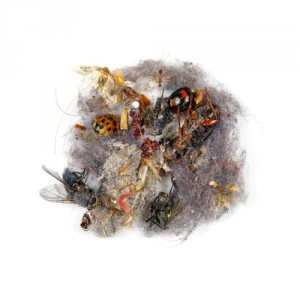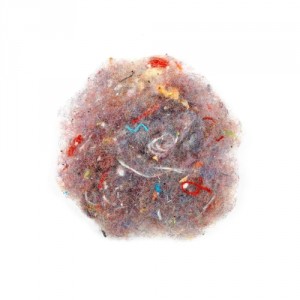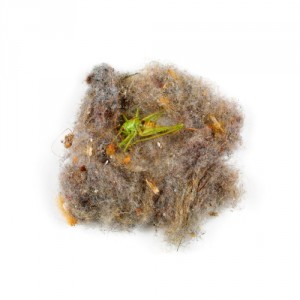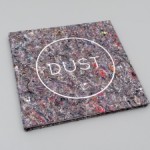
(c) Klaus Pichler
But photographer Klaus Pichler, whom we already know from his series “Skeletons in the Closet”, has now captured this aesthetic aspect of dust. Fascinated by the difference between the dust from a natural history museum and a fashion shop I asked him how he got the idea:
Klaus Pichler:
“The idea for this project came by coincidence: I moved from my old apartment and while I was clearing the space I realized the dust in the living room was red and the one in the bedroom was blue. This astonished me and I couldn’t get it out of my mind, so I decided to look into it and to study dust systematically, especially the notorious “dust bunnies”, agglomerations of dust. Right from the start it was my plan to create an archive of dust that should contain dust from a wide range of areas from our society and that all dust samples should be photographed. To decide on which places to collect dust I took the model of the basic living needs (reside, work, recreation, traffic,…) and used it to decide roughly the weighting of the places that should be included in this project. And then the time had come: I went dust hunting!

(c) Klaus Pichler
The dust samples I discovered (I tried to collect different samples in every room but always kept only one) went to my dust archive. I cataloged them with consistent categories (date, place, address, description, catalog number) and archived them in numbered petri dishes. Every time I had 25 new samples I made a photo session where I photographed them all at the same conditions with a high-resolution macro camera. The results of my activities as a collector can be found in the book “Dust” that is out now.”
What is it that fascinates you about dust which is for most of us – especially registrars – only an annoyance?
Klaus Pichler:

(c) Klaus Pichler
That’s why I’d like to give you this little piece of advice: Next time you are sweeping dust, take a moment and a strong flashlight, guide the beam to the dust bunnies and dive into the fascinating world of dust.”
Thank you for the opportunity to see our dust with different eyes!
The book “Dust”:
 Hardcover wrapped with 2mm textile and flocked ‘Dust’ logo, handmade, 30x30cm (open: 30x60cm), 102 pages (4 pages transparent paper, 98 pages uncoated paper), 45 images. Including a folded poster, 50x70cm, printed on uncoated paper.
Hardcover wrapped with 2mm textile and flocked ‘Dust’ logo, handmade, 30x30cm (open: 30x60cm), 102 pages (4 pages transparent paper, 98 pages uncoated paper), 45 images. Including a folded poster, 50x70cm, printed on uncoated paper.
First edition, 2015. Limited to 450 hand numbered and signed copies.
Can be ordered via the author’s website:
http://kpic.at/images/4497
This is what one would refer to as ‘when life throws you lemons, make lemonade.
It would appear that the study of dust particles or bunnies would reveal a story about its past and present locations which could be used to possibly map its travel adventures through the floors of its existence. Could their be a sequel?
I am laughing after reading this because I have finally found somebody in the world who is as “weird” as me. Almost everyone thinks I am “off the wall” because of the many things I do that are similar yet perfectly based in science – look closer at that stuff with a microscope and you would probably get sick. when I sold my home and packed my 6,000 volume library I insisted on using a vacuum cleaner on every individual book before I wrapped and packed them for storage. Nobody understood my explanation and simply accused me of “stalling” the move. Are we surrounded by idiots? I think yes. People do not understand the relationships between and among dust, mold, temperature, humidity, light – did I miss anything? The idiots say “just box it up” as they hand you an empty banana box with nice handles. I am also an amateur photographer but the close-ups that I do are for medals, coins, stamps and other collectibles. Klaus – you may have my vacuum bag anytime you want it for your next book!
I’ve seen a person use dryer lint of different colors to make a picture. She sells her works. I believe dust might also be used in the same way.
You can make rather nice paper from dryer lint. The color tends to be gray, although the bright red lint we got after washing new flannel sheets for the first time was lovely. It’s the same process as making it from any fabric fiber.